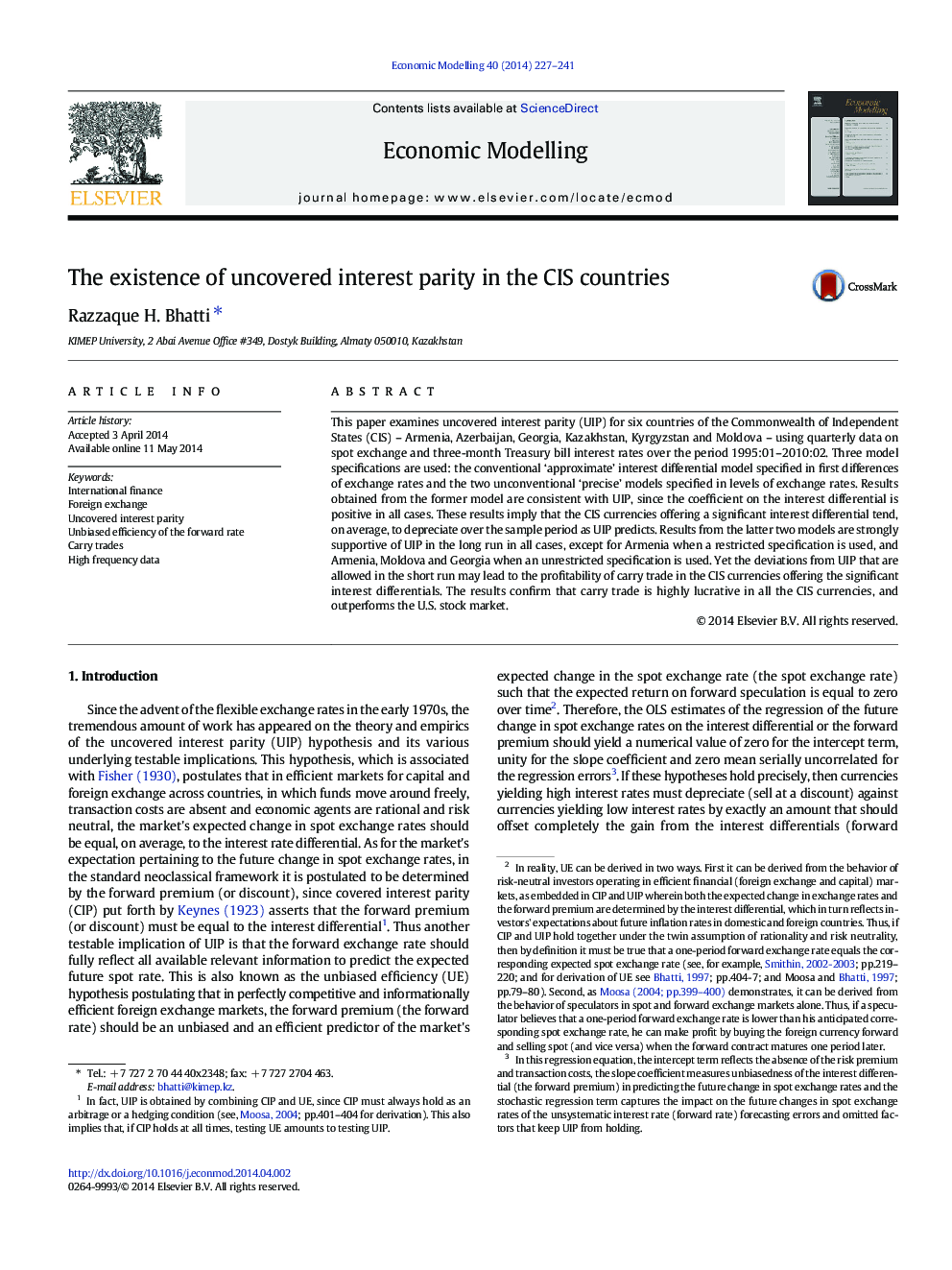| Article ID | Journal | Published Year | Pages | File Type |
|---|---|---|---|---|
| 5053868 | Economic Modelling | 2014 | 15 Pages |
Abstract
This paper examines uncovered interest parity (UIP) for six countries of the Commonwealth of Independent States (CIS) - Armenia, Azerbaijan, Georgia, Kazakhstan, Kyrgyzstan and Moldova - using quarterly data on spot exchange and three-month Treasury bill interest rates over the period 1995:01-2010:02. Three model specifications are used: the conventional 'approximate' interest differential model specified in first differences of exchange rates and the two unconventional 'precise' models specified in levels of exchange rates. Results obtained from the former model are consistent with UIP, since the coefficient on the interest differential is positive in all cases. These results imply that the CIS currencies offering a significant interest differential tend, on average, to depreciate over the sample period as UIP predicts. Results from the latter two models are strongly supportive of UIP in the long run in all cases, except for Armenia when a restricted specification is used, and Armenia, Moldova and Georgia when an unrestricted specification is used. Yet the deviations from UIP that are allowed in the short run may lead to the profitability of carry trade in the CIS currencies offering the significant interest differentials. The results confirm that carry trade is highly lucrative in all the CIS currencies, and outperforms the U.S. stock market.
Keywords
Related Topics
Social Sciences and Humanities
Economics, Econometrics and Finance
Economics and Econometrics
Authors
Razzaque H. Bhatti,
